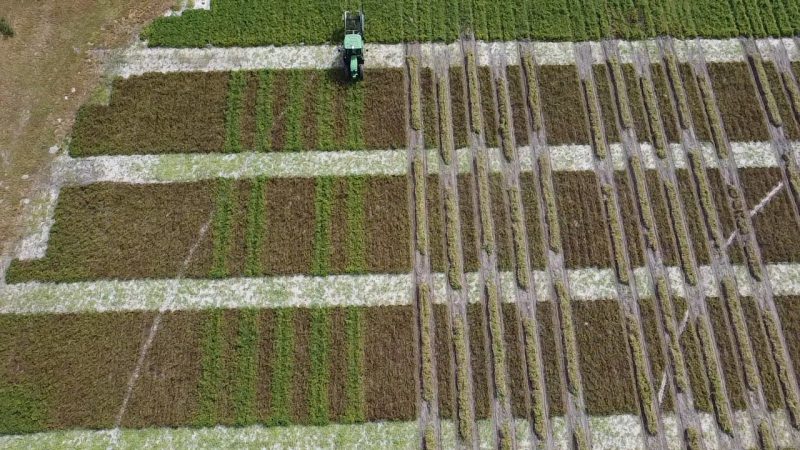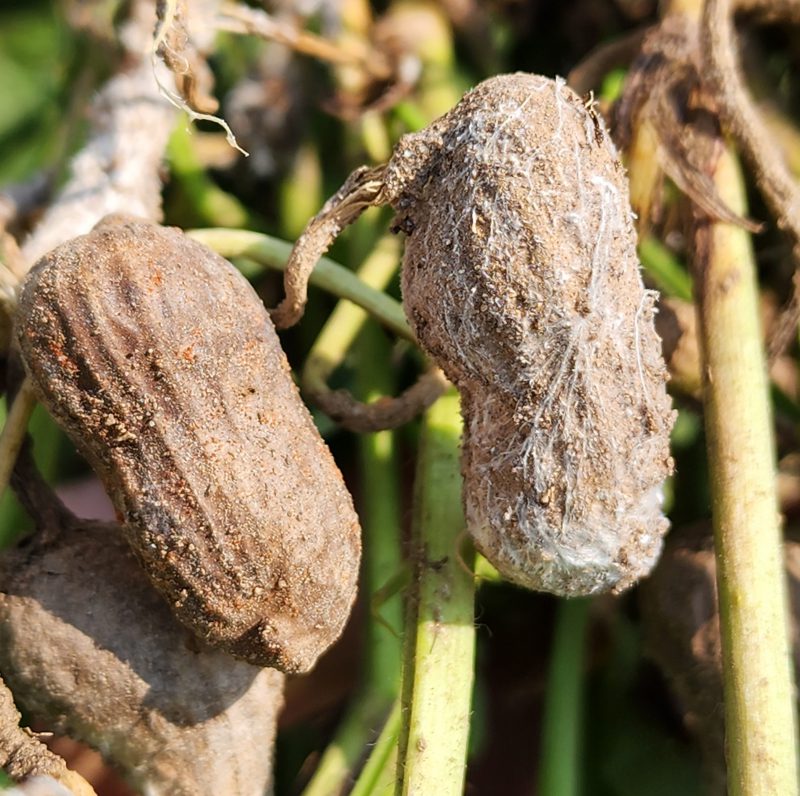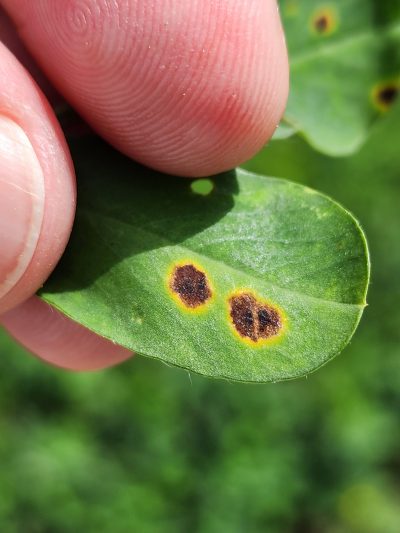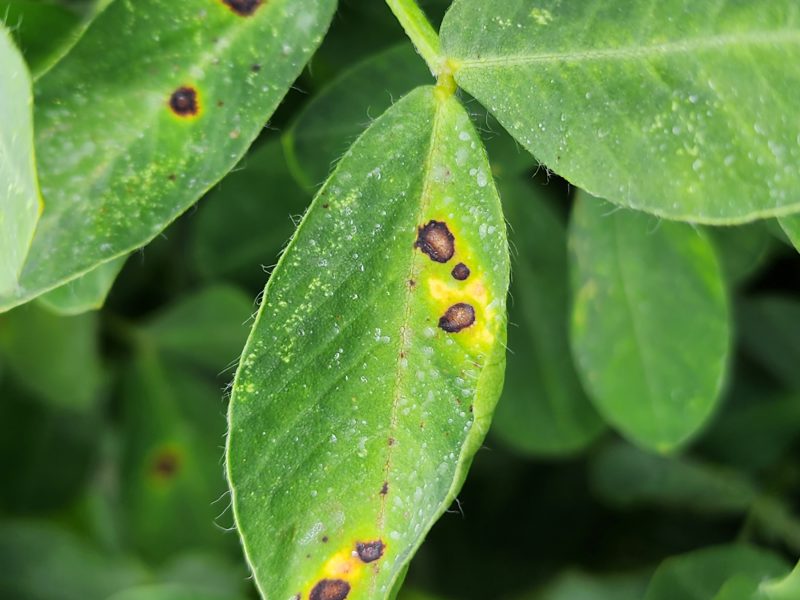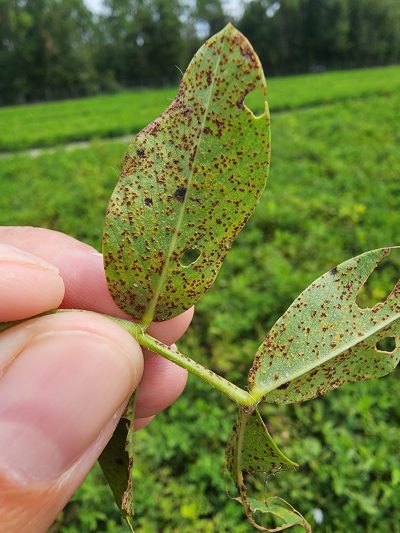Now that the 2023 Florida peanut season is behind us, it is important to review some of the common diseases that affected this year’s crop as well as future considerations for management. Here are some brief notes on southern stem rot/white mold, peanut leaf spots and rust, three prevalent diseases for damaging peanuts in our state.
–
Southern stem rot/white mold
Southern stem rot, also commonly called white mold in the lower southeastern peanut production areas, is a disease that received a lot of attention in 2023. The environment, hot and wet followed by periods of hot and dry, lead to peanut yield losses from this disease in Florida, especially in dry land peanuts. There were many situations in which varieties with resistance to the pathogen and high-quality fungicide programs were used, however, significant damage from this disease was still present. So, what can someone do to better manage this disease in 2024? First, consider adding an extra year or two to your crop rotation in fields that had significant yield losses despite using a resistant variety with a stem rot focused fungicide program. However, land availability for an adequate duration rotation is often limited in many situations, in this case, consider adding an early stem rot focused fungicide spray to your program and finding a way to apply the fungicide product to crown (e.g. night sprays or higher water volume/gpa) later in the season (~75 days after planting or more). It is important to remember that while fungicides are great disease management tools, they all have their limitations when it comes to disease control.
–
Leaf spots
There are two types of leaf spot diseases that affect peanuts: early leaf spot and late leaf spot. This is important because our peanut varieties and fungicides can respond differently to these two diseases. This is especially important when using fungicides with FRAC group 11 (QoI) fungicide products. Resistance to this fungicide class has been detected in pathogens the cause both diseases, however, complete resistance to QoI fungicides was only detected in the ELS pathogen. Thus, it is still possible to see adequate disease management of LLS with this fungicide class. However, it is often difficult to tell the difference between these diseases and abiotic problems in the field, but accurate diagnosis is possible with a microscope and/or hand lens. To avoid fungicide management problems with QoI fungicides, it is recommended that a leaf spot resistant variety is planted, as it can reduce the impact of a fungicide failure.
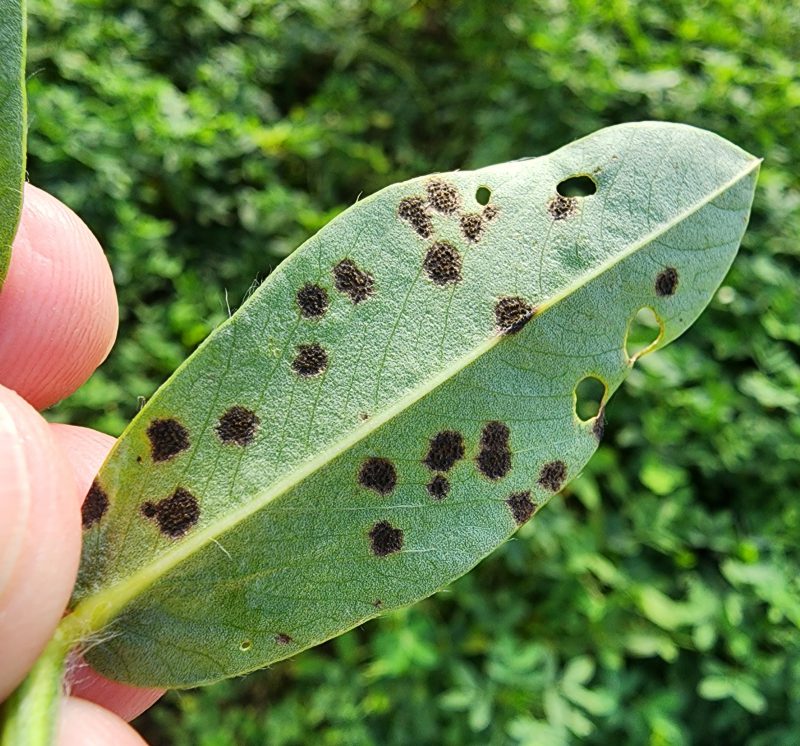
Late leaf spot lesions and stroma on the underside of a peanut leaflet. Credit: Nick Dufalut, UF/IFAS
–
–
Rust
Peanut rust showed up late in the 2023 season, but quickly spread in fields where it was present. Late season infections do not always lead to yield losses in crops harvested within a timely manner, however, a five-to-seven-day delay in harvest can cause significant damage to a peanut crop. Also, the presence of late season tropical storms can delay timely fungicide applications that can slow this disease down. Should rust become an issue in 2024, most leaf spot products work well for managing this disease but adding in FRAC group 11 modes of action fungicides can improve management of this disease.
–
Additional diseases of interest
There are many diseases to consider when developing your management program in peanuts. Three other recent diseases are:
–
Remember, it is always important to identify the diseases you have each year, as this will help you prevent disease problems from carrying over into the next season. Diseases can be a substantial problem when the right environment is present even if we use resistant varieties and a good fungicide program. In areas where those two techniques fail, it is critical to consider adding a third management tool, such as crop rotation or delayed planting. For more information on peanut disease management, please visit the UF/IFAS Florida Peanut Team website or contact your local county agent.
- 2025 End-of-Season Florida Peanut Disease Notes - October 24, 2025
- Southern Rust Confirmed in the Florida Panhandle – June 2025 - June 6, 2025
- Stay Ahead of Disease with the Spore Report: A New Tool to Assist with Potato and Watermelon Management - April 11, 2025

